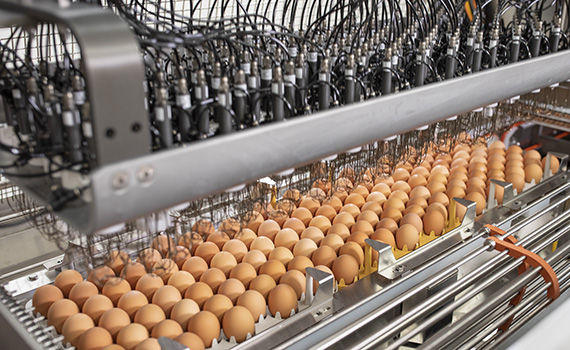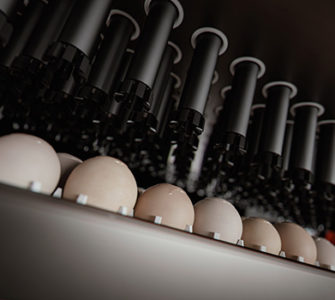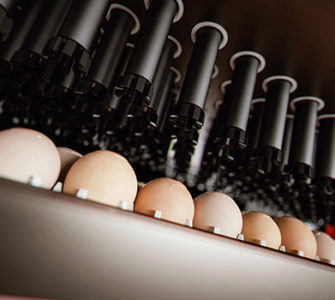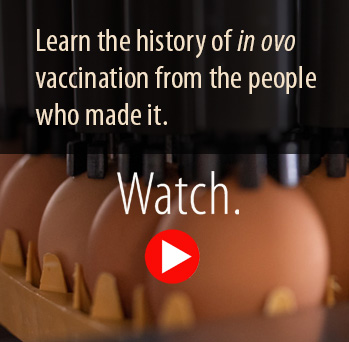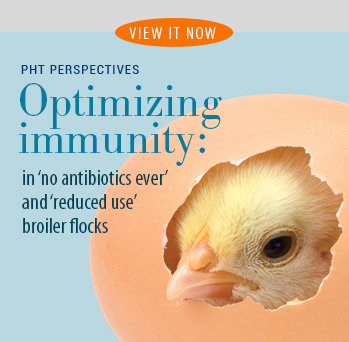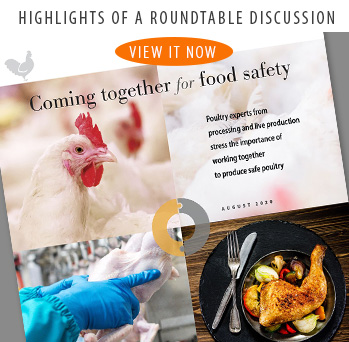Five key points to consider when preparing to switch to in ovo vaccination
A steady shift to in ovo vaccination in the Asia-Pacific region is encouraging many hatcheries there to improve practices and management in preparation for the switch.
“Birds have developed in leaps and bounds in recent years, but many hatcheries are still using outdated management practices and need support modernizing them to help improve overall hatchery performance,” said Peter Amendola, hatchery support manager for Zoetis.
“Once a producer has expressed interest in using in ovo technology, we have a detailed policy and procedure in place to help them prepare the environment for biodevice installation. This involves implementing best practices and management protocols that are essential to successful in ovo vaccination — but are also beneficial to hatcheries regardless of whether they use this technology. In fact, some hatcheries that were not quite ready for in ovo vaccination still made meaningful improvements through this process and have reported better performance as a result.”
To ensure a successful move to using biodevices for in ovo vaccination, Amendola outlined five key points of focus.
Ensure quality of what’s coming into the hatchery
One major factor in a hatchery’s success is the quality of the eggs coming in, he said. It’s therefore critical to ensure that breeder farms are following guidelines from their suppliers.
“The way their sheds are set up or their practices on the farm might be outdated, so therefore you get an inferior egg into the hatchery. That inferiority often flows through the hatch,” he continued.
“You’ve got to change that mindset: The breeder farm needs to get to a standard so the hatchery can get to a standard. This might mean that there are better hygiene practices and biosecurity, more monitoring of eggs coming in, as well as improved farm hygiene and bird health.”
Optimize hatchery conditions
Once the basics are established for the incoming product, it’s time to focus on what’s happening in the hatchery itself, Amendola said. Having the cool room at the right temperature, properly recording egg movement and monitoring incubator performance are basic standards any hatchery can achieve. Looking at incubators in particular, it’s important to monitor how quickly embryos get up to temperature, as well as what the overall temperature profiles are, he stressed.
“Producers don’t need to change their entire operation. If you’re working in a 50-year-old hatchery, there are many ways to make incremental changes without spending a lot of money on capital expenditure. We work with each individual hatchery to understand and meet its needs and get it up that ladder for a successful transition to in ovo vaccination,” Amendola said.
Hygiene and an ability to maintain and monitor equipment are the two key areas where there can be little compromise, however.
“One of my customers was a 15-year-old hatchery with new management. Maintenance had been let go, so we helped guide them on the right path, advising them on what they need to monitor and what data to collect. Then we went back and reviewed it with them to help them understand what is working well and where improvements can be made. It’s just opening their eyes to the fact that they don’t necessarily have to do a lot of work to achieve good quality control,” he explained.
Timing is crucial
The timing of points in the hatchery process is essential for in ovo success, Amendola stressed. This includes time of set, time of transfer, time of pull and the time taken to get chicks to the farm.
Stage scoring is vital in helping ensure timely vaccination. A selected number of eggs are opened at transfer to determine if the embryo’s development is in line with the date and time that’s on the incubator.
“Sometimes embryo development can be up to 9 hours off, so you’re transferring the birds too early or too late to suit in ovo vaccination and to get a good quality chick,” he noted.
Don’t forget water quality
Poor water quality is another common problem that’s often worsened by inadequate cleaning materials.
“If you’re trying to clean your hatchery with dirty water, you’ve got a dirty hatchery. Even newer hatcheries can experience major problems with mold and bacteria if not cleaned and disinfected properly,” he explained.
Helping producers improve water quality, whether by using bottled water or installing a small reverse osmosis plant or a UV treatment system, is essential in such cases, alongside clear communication of the implications.
In ovo vaccination provides optimal efficacy and early immunity to the compared to other vaccine methods, but it can be sensitive to contamination levels.1
“It’s important to follow biosecurity guidelines to maximize hygienic conditions, giving the chick the best possible start,” Amendola said.
“You’re working with the embryo, not with the day-old chicken. If bacteria is introduced at transfer, it has another 3 days to grow and spread as the chick hatches. But with good practices, any hatchery can maintain and monitor this critical factor to help achieve optimal results.”
Good management is backbone of in ovo success
Ensuring good cleaning processes and timely maintenance requires good management. This involves knowing not just which data to collect but how to use that data to improve hatchery performance and chick quality, he said.
Breeder standards and incubator manufacturer standards are good points of reference which can be used for benchmarking, he added, but keeping an open mind is essential in guiding the process toward the installation of biodevices.
“Every hatchery is unique, and it can have one good area and one bad area. You’ve got to try and balance it all out and treat every site individually,” he added. “We work with management from all different backgrounds and experiences to walk through each crucial step of the process to ensure a successful operation.”
Case study: Helping achieve optimum hatchery performance
Not all hatchery audits by Zoetis experts result in Embrex® device installations, but they do reliably lead to meaningful improvements in hatchery performance. In the real-world case study detailed below, an audit helped one hatchery that was not yet ready for in ovo vaccination achieve better results across multiple parameters.
Audit approach:
- Stage scoring to evaluate embryonic development at transfer
- Review of incubator and hatcher profiles
- Egg residue analysis to detect embryonic death timeline
- Review of cleaning processes
Findings:
- Air supply temperatures and hatcher profiles not aligned with incubator
- Lack of adequate airflow from A/C units and between eggs
- Poor door seals and egg-room temperatures unaligned with storage periods, leading to staggered embryonic development and poor hatch window
- Faulty water system causing bacterial loading, meaning poor-quality chicks and higher-than-expected culls
Solution:
Working with the hatchery management and staff, slow adjustments were made to practices starting at the cool room followed by the incubation period and hatchers, aligning systems and practices with the needs of developing birds.
Results:
- Hatch window corrected from a multiple pull (up to 24 hours) to a single pull (6 hours)
- Hatch of fertile rate lifted by 5%
- Culls reduced by 1.5%
- Seven-day mortality reduced by an average of 1.8%
- Bacterial loading in the hatchery reduced
- Hatchery efficiency improved and man hours reduced
1 Barbosa T, Williams C, Villalobos T. Efficacy and Marek’s disease protection comparison between different vaccination methods. In Proceedings: 18th Congress World Vet Poult Assoc. 2013;217.
MM-18075
Posted on November 1, 2022



